
Last Updated:
Taking another look at the AMD RDNA2 refresh we now compare the RX 6950 XT vs 3090 Ti. Although more aimed at the RTX 3090 it now leads the lineup of the current generation. Both of which cater to the 4k and high-end market, leaving no pixels or budget behind. Aiming to take the spot at the top for the best graphics cards.
The AMD card is the younger of the choices, but not by a lot. With a release date of May 2022, compared to the 3090 Ti which came in March the same year. Both are seemingly coming towards the end of the generation expected to be surpassed in the second half of 2022. But a bit further down the line, the price may be a bit more reasonable with some new products.

Asus GeForce RTX 3090 Ti ROG Strix LC OC
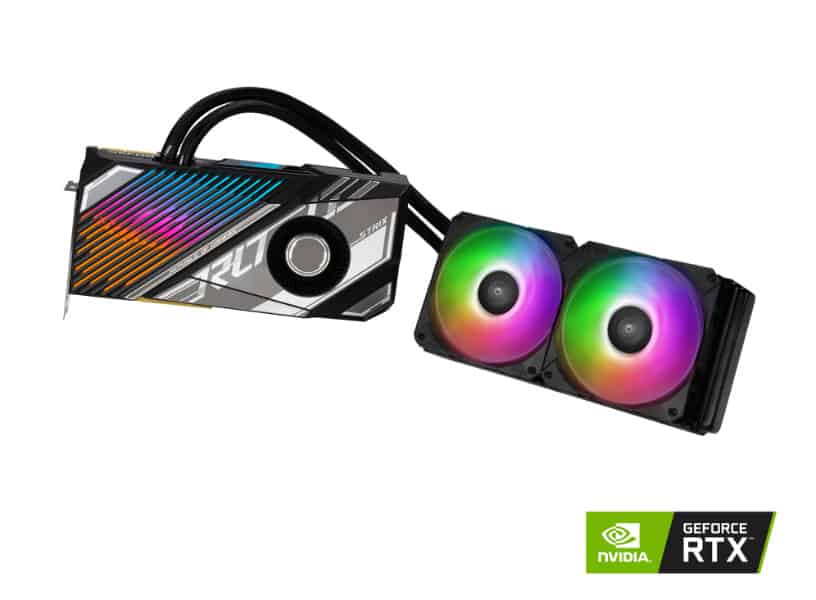
Pros
Potential for higher overclocking

ROG Strix LC Radeon RX 6950 XT OC
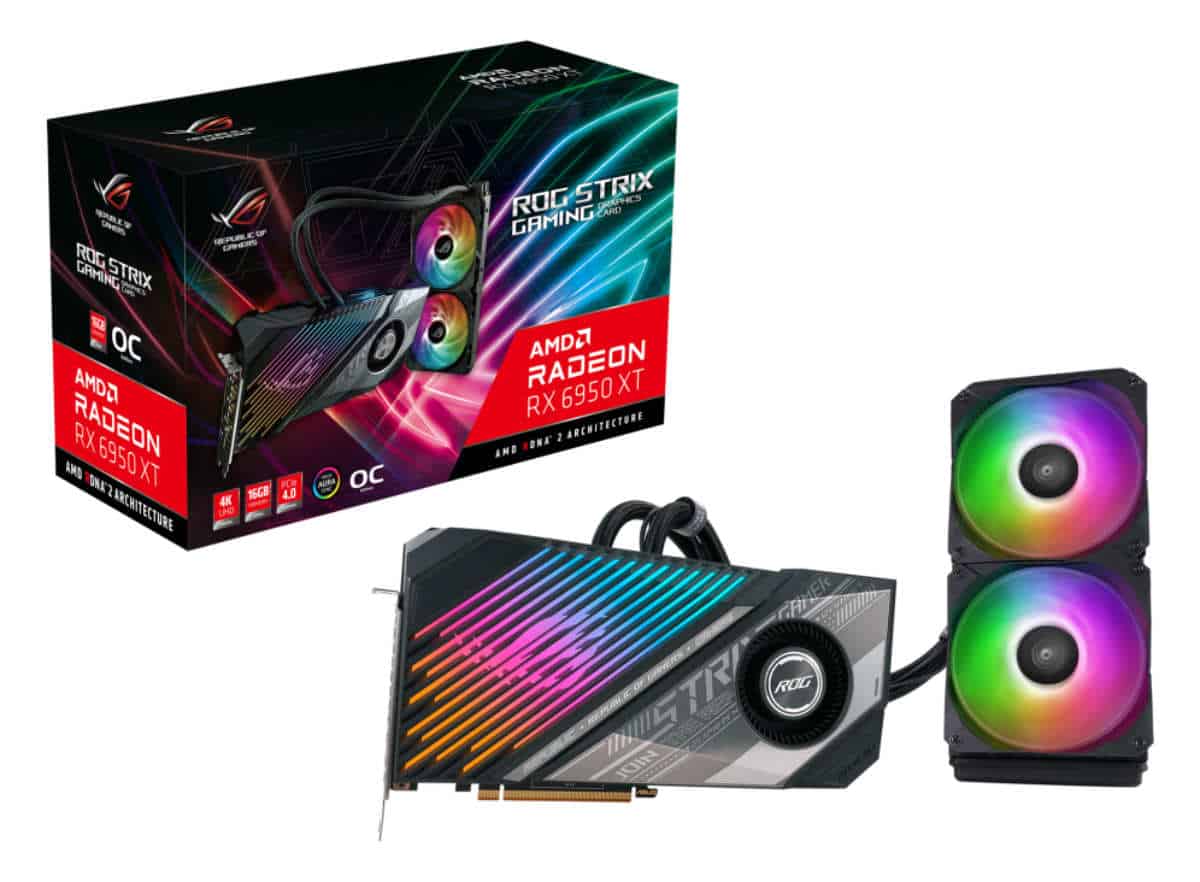
Pros
Best overclocking capabilities
Architecture
Comparing the architecture of different manufacturers is mostly unproductive. As they will be created in different ways and with different components. Ultimately working differently with varied parts. But it can give us an understanding of the core differences and what makes the GPUs tick to see how they differ.
The RX 6950 XT is a Navi 21 KXTX GPU variant. A slight variation from its predecessor it still features the same parts. Created with TSMCs 7nm process with 26.8 billion transistors, creating a 520mm² die. Whilst the RTX 3090 Ti is based upon the GA102-350 variant. This is made with Samsungs 8nm process, containing 28.3 billion transistors creating a die 628mm² in size.
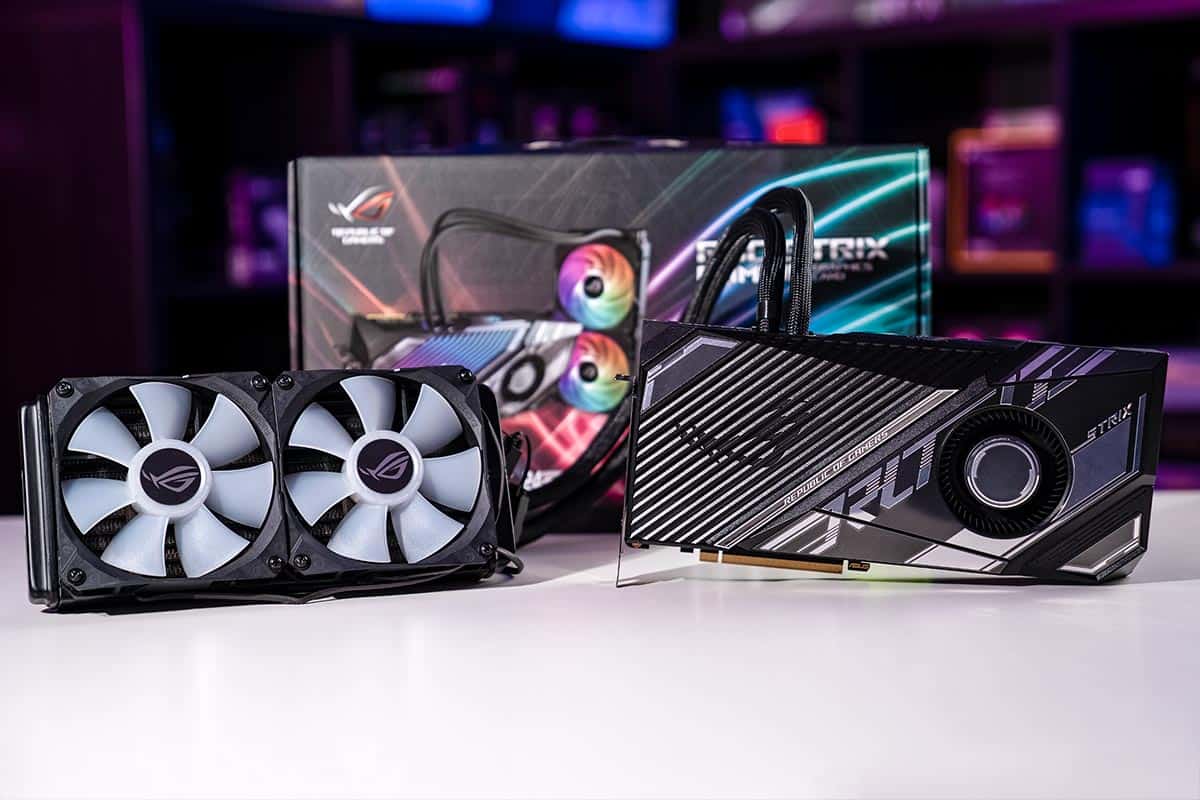
Specifications
| RX 6950 XT | RTX 3090 Ti | |
|---|---|---|
| GPU | Navi 21 KXTX | GA102-350 |
| Shaders | 5,120 | 10,752 |
| RT cores | 80 | 84 |
| TMUs | 320 | 336 |
| Memory | 16GB GDDR6 | 24GB GDDR6X |
| Base clock | 1,925 MHz | 1,560 MHz |
| Boost clock | 2,324 MHz | 1,860 MHz |
| Memory clock | 18 Gbps | 21 Gbps |
| Card bus | PCIe 4.0 x16 | PCIe 4.0 x16 |
| Memory bandwidth | 576.0 GB/s | 1,008 GB/s |
| TDP/TBP | 335W | 450W |
We also compare the rest of the packages between the RX 6950 XT vs 3090 Ti. With the die a bit more of a nonstarter than the rest of it there are a lot of standard comparisons we can make between them. We go into some more details comparing some from the table above.
GPU die cores
Based on the different architectures there is no one-to-one comparison either for the die’s cores. They are what make up the die to make it function, and they are specialized to work on particular parts. There are the shaders working on shadows and shading, the RT cores that work our real-time ray tracing, as well as TMUs that create 3D objects from bitmaps.
Comparing the numbers we see what kind of things to expect between the two. The Nvidia card doubles the shader count of what AMD has to offer. But in terms of RT Cores and TMUs, it’s not that much higher in single digits. Although they all will work differently with different optimizations too.
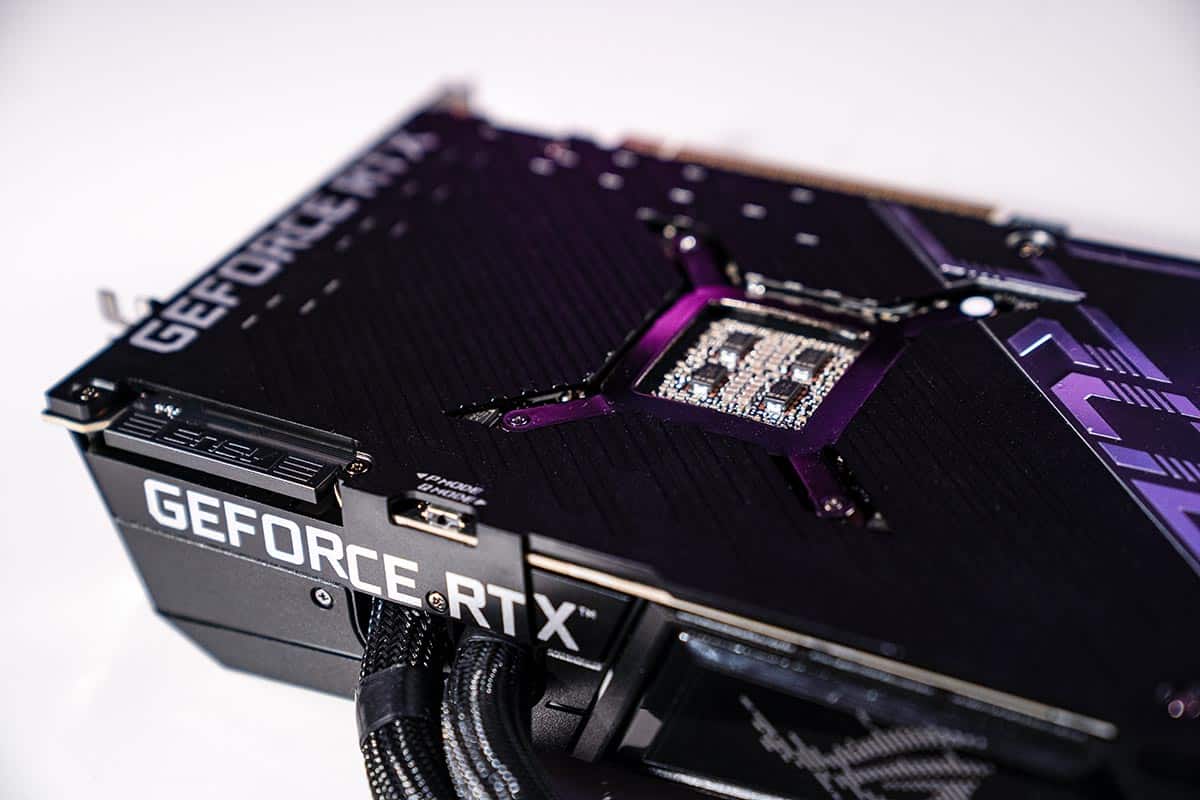
VRAM
Video memory of a card is used as a frame buffer and pixel storage. Aimed to reduce the frametime and latency between the CPU, GPU, and your screen. As well as allowing better performance for higher resolutions with their larger pixel counts.
Between these two graphics cards, there are some differences in what they have to offer. The 6950 XT has 16GB of GDDR6 memory clocked at 18 Gbps. So the 256-bit bus allows for a bandwidth of 576 GB/s. Whilst the 3090 Ti has 24GB of GDDR6X memory. With a 384-bit bus clocked at a staggering 21 Gbps, which gives an impressive 1,008 GB/s bandwidth.
Frequency
Clock rate/cycle is how often the silicon crystal can flip. This is them processing the instructions, so with a higher clock, they can all be done faster. Creating the images much faster and getting them to your display. It’s also a factor that can be overclocked, allowing some performance increase for the end-user at the price of heat.
Between the two cards, it’s the AMD GPU with the higher frequencies from the get-go. It has a base clock of 1,925 MHz with a maximum boost of 2,324 MHz. Whilst the Nvidia card snails behind with a base of 1,560 MHz and max boost of 1,860 MHz.
TDP/TBP
Lastly, we have the total design or board power. It’s a measure of the maximum amount of power that the board can consume at max utilization. It gives an estimate of the power consumption of the GPU and the heat it will give off consuming it. There is a significant difference between the two cards, with the 6950 XT rated for 335 W whilst the 3090 Ti with 450 W. So AMD will save you quite in terms of rising bills.
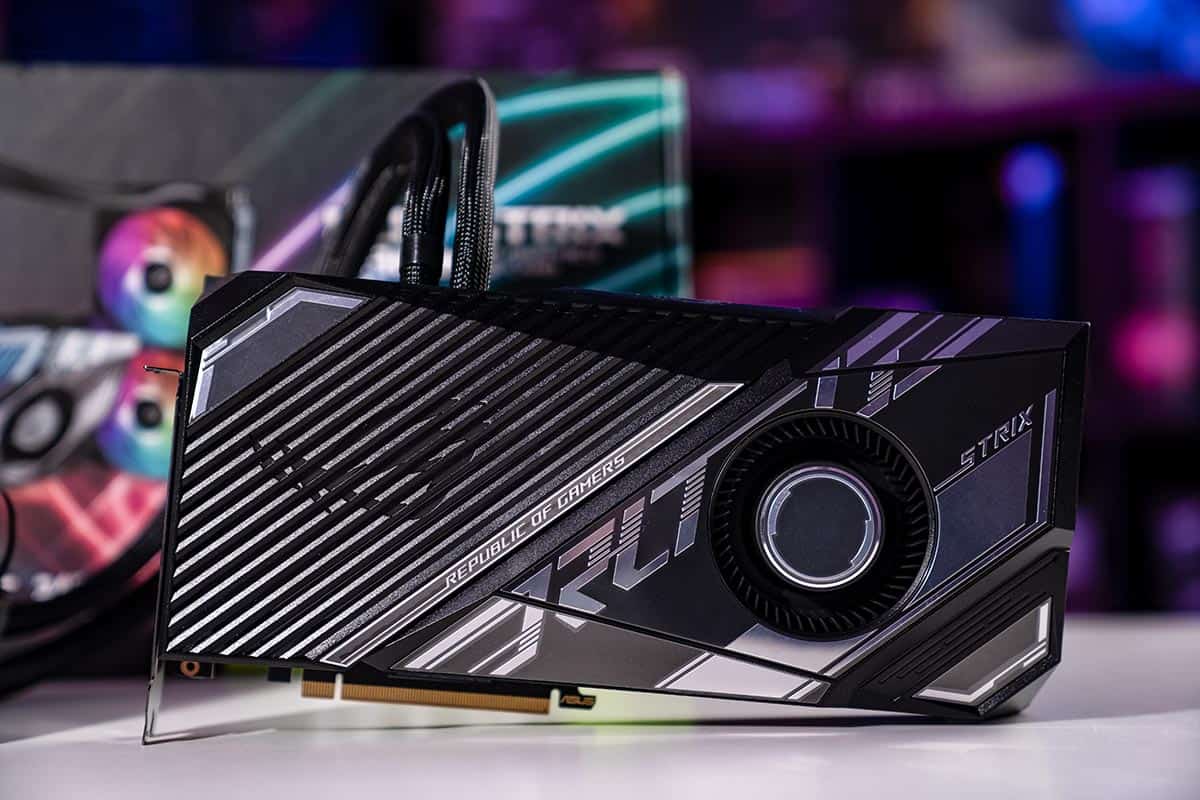
RX 6950 XT vs 3090 Ti performance
In Tom’s Hardware’s RX 6950 XT review, there are great testing results. Pitting the 6950 XT against the rest of the top cards, where you can find a surprisingly good result. As it manages to pull ahead of the 3090 Ti and the rest of the options on average at 1080p and 1440p.
However, it does fall behind in 4k performance, likely coming from the smaller and slower VRAM option. But it also falls behind in ray tracing and creator tasks. So if good lighting and rendering are important the AMD card falls behind many lower Nvidia options.
RX 6950 XT vs 3090 Ti price
Here is where the AMD selection wins by a landslide when comparing the MSRP of these cards. The 6950 XT was launched for the recommended price of $1,099. Whereas the 3090 Ti was set nearly double that with an ask of $1,999. A night and day difference can be the biggest factor when selecting which one of these to pick.
Even now the GPU market is coming in close to MSRP. You can easily find both of these cards for their advertised price. So even when having to buy them the choice shouldn’t be much more influenced than the base facts. With Newegg offering on price or slightly above for the range of models.

MSI NVIDIA GeForce RTX 3090 Ti SUPRIM X
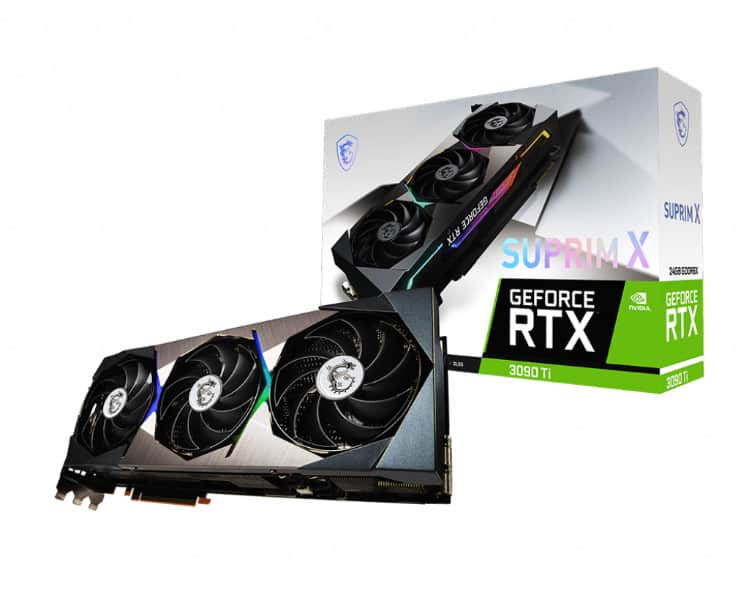
Pros
Plenty of thermal capacity

MSI Radeon RX 6950 XT GAMING X TRIO
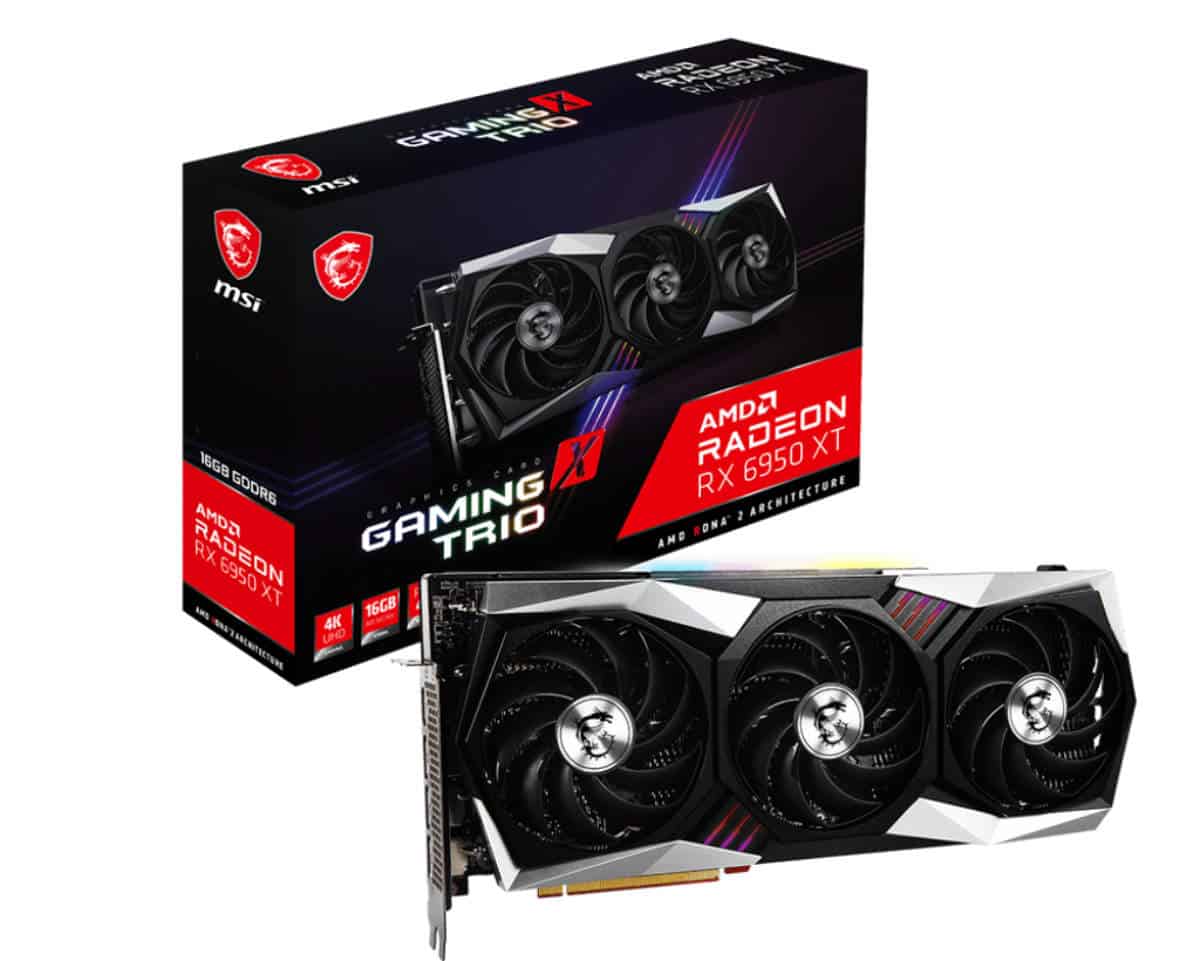
Conclusion
The heaviest factor for us when choosing between the RX 6950 XT vs 3090 Ti is the price to performance. For gaming performance, the 6950 XT is the clear better choice. For nearly half the price it can match or outperform the 3090 Ti. The only drawback would be if you needed it for professional use cases or for ray tracing. That’s where team Green takes the lead at a premium price.
Although it might be worth waiting for the next-gen of cards. The current rumor is that the RTX 40 series and RX 7000 series will launch in the second half of 2022. Which are said to provide a large performance increase over the current-gen so it might be worth sitting tight.






